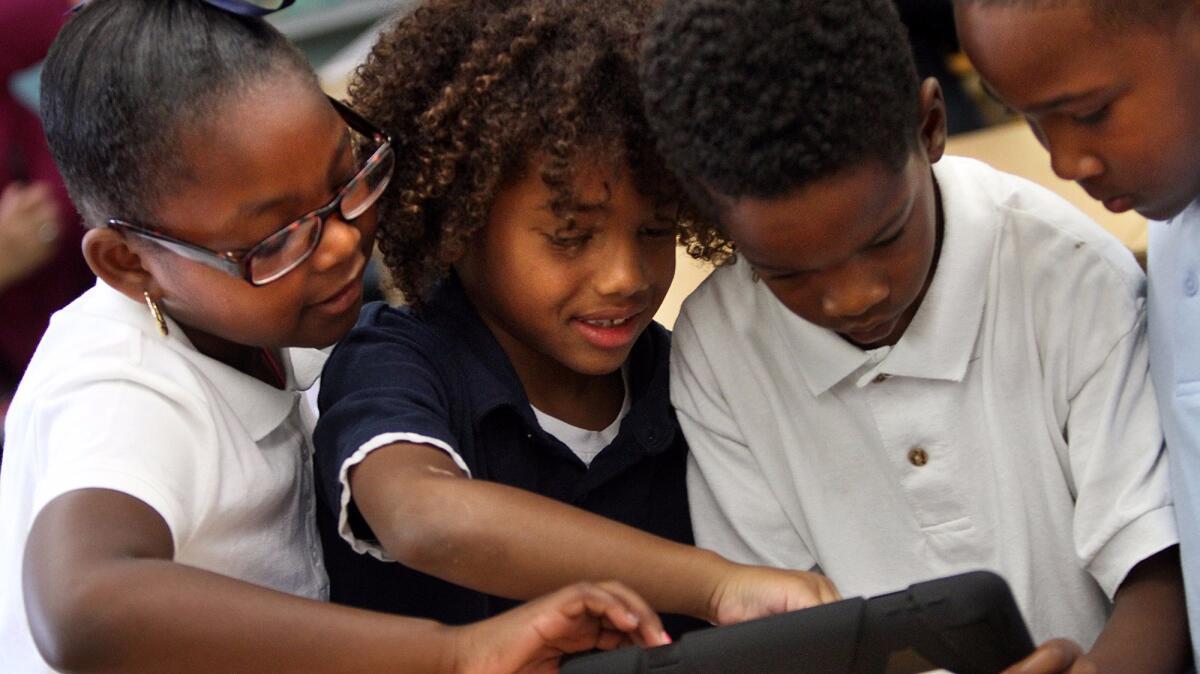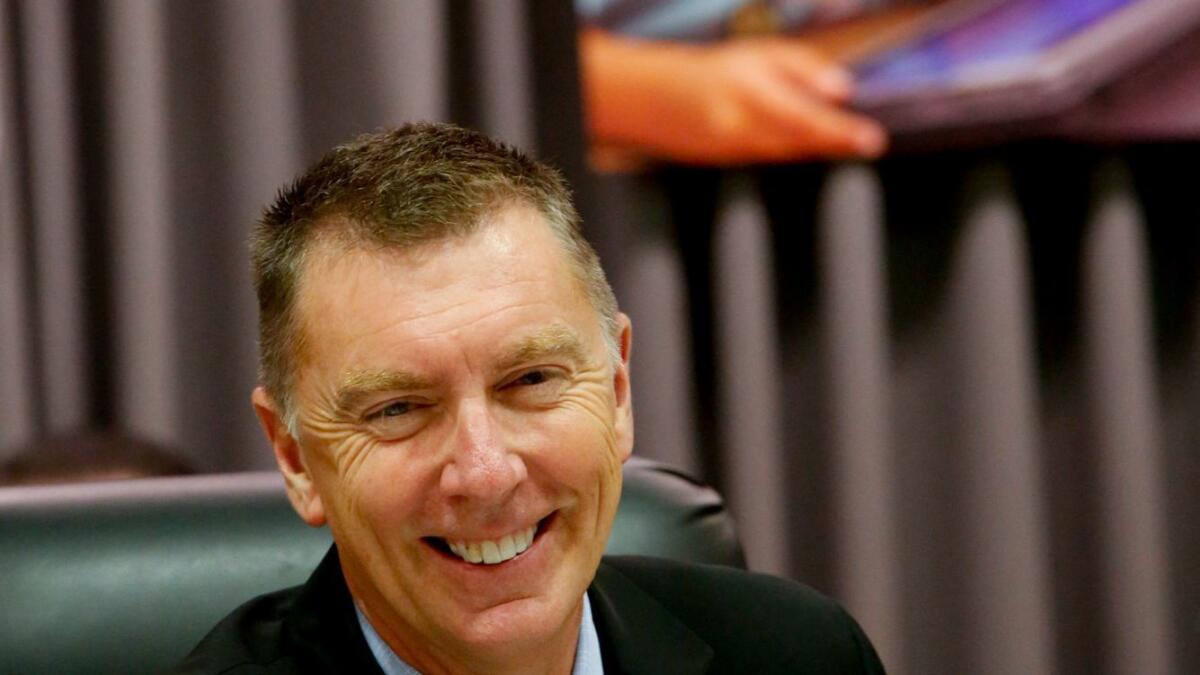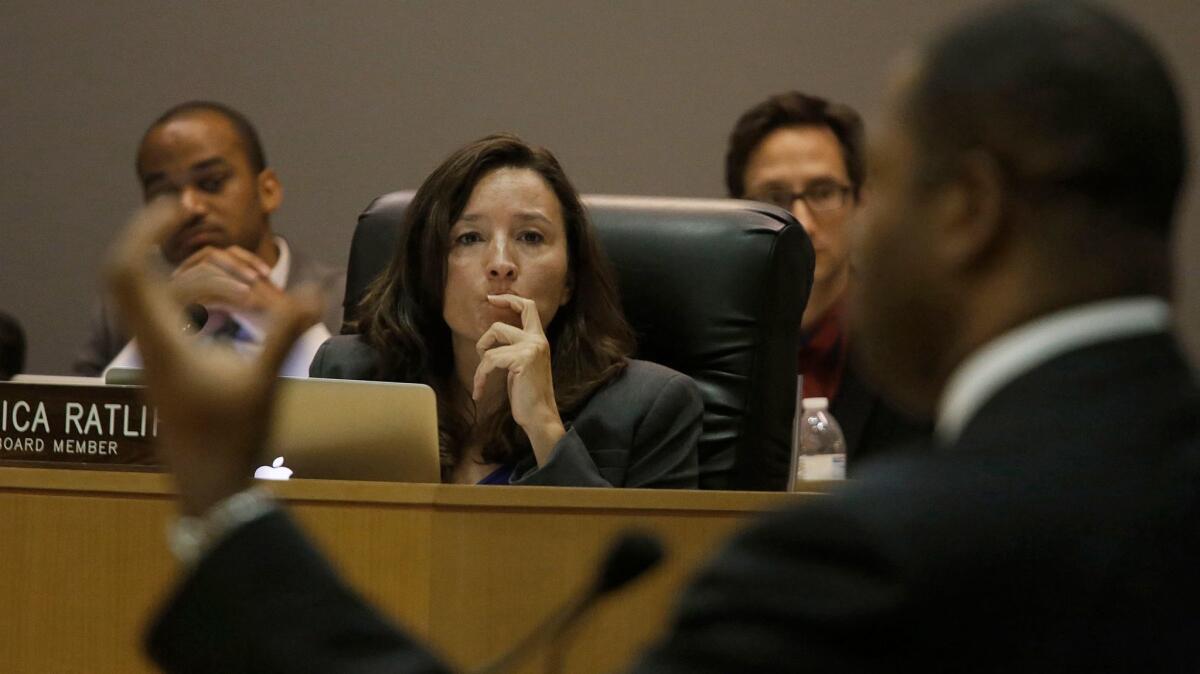U.S. attorney won’t file charges after probe of $1.3-billion iPads-for-all project in L.A. schools

The U.S. attorney’s office has decided not to file charges after a lengthy FBI investigation into the bidding process that won Apple a contract to provide 650,000 iPads, one for every student, teacher and administrator in the Los Angeles Unified School District.
The decision, confirmed Tuesday by the school district and by sources in law enforcement, brings to a close an infamous chapter in the history of the nation’s second-largest school system — and one that continues to haunt it.
No officials from the agencies involved, including the FBI, would comment on the investigation or its conclusion.
The $1.3-billion iPad project was a flagship effort of then-Supt. John Deasy, who spoke of it as a question of equality.
“This is a civil rights issue,” Deasy said at the time. “My goal is to provide youth in poverty with tools that heretofore only rich kids have had. And I’d like to do that as quickly as possible.”
It turned into a debacle that began with a rocky rollout, followed by revelations about costs and the bidding process, and wound up as a key factor leading to Deasy’s resignation under pressure in October 2014. That December, FBI agents descended on district headquarters, carting away 20 boxes of documents.
“The iPad plan probably started out as a commendable idea, and it ended up as a political and policy catastrophe,” said Raphael Sonenshein, executive director of Cal State L.A.’s Pat Brown Institute for Public Affairs. “It clearly ended the career of the superintendent, and it still turns up in school board discussions as the way not to make decisions.”
Especially under scrutiny by investigators were personal ties and communications that Deasy and other district administrators had with executives from Apple and Pearson, the company that provided the curriculum installed on the devices.
The school board approved the iPad project 6 to 0 with no fanfare and sparse discussion in June 2013. On the advice of attorneys, Deasy left the room while the board deliberated because he owned 15 shares of Apple stock, valued at $7,793.70.
But later it came out that Deasy had worked closely with Apple and Pearson and had little or no contact with competing vendors, according to records released by the district. He’d also filmed a promotional video for the iPad in December 2011, before he announced the iPad-in-schools plan. A pilot project in the year leading up to the board vote tested only iPads — while another did a trial run of Pearson’s online content.

After Deasy in the fall of 2012 announced his plan to provide a tablet computer to every student, he stepped aside during his staff’s formal evaluation of vendors.
Months later, senior staff members gave the Board of Education their formal recommendation that the combination of Apple and Pearson would provide the best products at the best price — claims that later would be called into question.
The first public problems emerged with the fall 2013 rollout at a first group of 47 schools. High school students immediately discovered that they could delete security software with two keystrokes and then be free to surf the Internet, go on social media and look at adult sites. Officials then quickly reclaimed the iPads, locking them up at some schools for the rest of the year.
It also became clear that the district hadn’t made a plan for what to do if iPads were damaged, lost or stolen, although few were.
But perhaps the fundamental issue was that teachers hadn’t been properly trained. The program’s first formal internal evaluation found that in 245 classrooms, only one teacher was using the costly online curriculum.
One embarrassment was the spectacle of officials unable or unwilling to provide accurate information. During a public meeting, a senior administrator said the district would own the curriculum. In fact, it had purchased a three-year lease, and only sample lessons were available during the first year.

To make matters worse for Deasy, a newly elected school board member, Monica Ratliff, decided to spend a year reviewing and investigating the project. Her committee concluded that the initial rules for winning the contract appeared to be tailored to the products of the eventual winners — Apple and Pearson — rather than to demonstrated district needs, and that key changes to the bidding rules were made after most of the competition had been eliminated under those first rules.
Then, in August 2014, in response to public records requests from the Los Angeles Times and KPCC, the district released emails, possibly by mistake, from the period just before the evaluation of bidders.
In one, then-Pearson Chief Executive Marjorie Scardino poured on the flattery to Deasy: “My mind was racing all weekend, and I was so impressed by your intelligent and committed and brave hold on the moving parts of the opportunity[.] I really can’t wait to work with you.”
In another, Deasy’s top aide, Jaime Aquino, seems to strategize with higher-ups at Pearson on how they could win the job.
“I believe we would have to make sure that your bid is the lowest one,” wrote Aquino, who was an executive with a Pearson affiliate before joining L.A. Unified.
“I was simply explaining that they have to be the low bidder,” Aquino later told The Times. “That’s simply explaining how it works.”
No evidence has ever emerged that Deasy or Aquino derived any personal financial benefit from the selection of the two vendors. Neither could be reached Tuesday, but both have denied any wrongdoing. They said that their contacts with vendors were legal and meant to get the best prices and services for students — and that they moved quickly so students could benefit quickly.
“Nothing was done in any inappropriate way whatsoever,” Deasy said after the disclosure of the emails. “Of course I talk to people. I would be expected to.”
Deasy’s successor, Ramon C. Cortines, called the iPad program unaffordable and canceled it part way through. Today, district students have access to a variety of computers, though many are shared. They include more than 124,423 iPads.
To read the article in spanish, click here
Twitter: @howardblume
UPDATES:
9:07 p.m.: This article was updated throughout to include background about how the iPad project began and to describe the extent of known ties that John Deasy and his senior aide Jaime Aquino had with officials from Apple and Pearson. It also includes new details about problems that emerged as the iPad program rolled out and about the uncovering of high costs and other issues.
This article was original published at 2:05 p.m.
More to Read
Start your day right
Sign up for Essential California for news, features and recommendations from the L.A. Times and beyond in your inbox six days a week.
You may occasionally receive promotional content from the Los Angeles Times.







